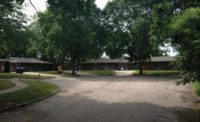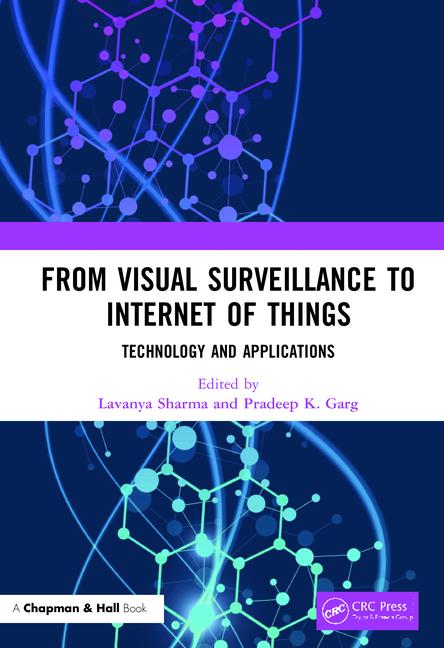Campuses Turn to Intercoms Using IP, Video

Southern Illinois University’s Edwardsville campus is one that has discovered the IP intercom system.
The role of the intercom has matured from traditional room-to-room voice communication to larger, more complex spaces. College and university campuses in particular are discovering new technologies as the ideal mechanism for intercom-based communication in point-to-multipoint networks.

SOUTHERN ILLINOIS UNIVERSITY: AUDIO OVER IP KEEPS STUDENTS, STAFF AWARE
The proliferation of IP as a reliable transport solution for live and pre-recorded voice has played a significant role in this maturation. Southern Illinois University Edwardsville is one campus that has discovered the IP intercom system. With 13 core buildings spread over 26 acres, the campus has leaned on IP to address the challenges of alarm transmission to multiple buildings separated over large areas of green space.Warning Sirens as a Potential Problem?
An existing siren system was put into place to warn students and staff of inclement weather, with tornados a specific concern for the sprawling campus in the Midwest. Each of the core buildings features a shelter area in the basement. The siren system effectively ushered students to the basements; the problem was getting them to leave.
“The old system was effective for initial warnings, but there was always confusion as to whether subsequent sirens meant to remain in the shelter areas or if it was safe to leave,” said Robert Washburn, director of facilities, Southern Illinois University Edwardsville. “A tornado event is usually 15-20 minutes, but some of these larger storms with tornados spread over the region can last well over an hour. How do you effectively communicate that with sirens?”
Upgrading the Campus
The campus recently instituted an audio over IP system that distributes audio to each shelter area from the dispatcher’s computer in the campus police station. Barix Exstreamer audio decoders reside at each site to receive prerecorded voice messages over the IP network, using minimal power. Each audio decoder includes a built-in amplifier to broadcast the message over intercom speakers in the shelter areas. The messages repeat three times to ensure that students and staff clearly understand the message being sent.
Washburn evaluated several systems, including an expensive hard-wired option, before selecting an IP solution. Cost benefits aside, the solution allowed his team to use the existing Ethernet backbone wiring that transports Internet and other data traffic across campus. Furthermore, the IP configuration established network connectivity to a satellite campus in Alton, Ill. 20 miles away, where seven more audio decoders were installed and are controllable from Edwardsville.
The BellCommander system from AcroVista Software is the central component of the system. BellCommander is responsible for transporting the prerecorded message to any number of Exstreamers in the network, and offers a microphone connection for recording pre-recorded messages into the database. The system runs in the background on a central computer, unnoticed for the most part.
“The flexibility of the system is ideal,” said Washburn. “An operator can select from a prerecorded list and send a message to individual buildings on either campus, or broadcast to all buildings on both campuses in an all-call configuration. The existing infrastructure allowed us to drop the decoder units on the network and connect them to nearby emergency power systems to ensure continuous operation. The beauty of the system is it simply runs in the background, yet is consistently monitored as it runs over our main network. We are immediately alerted to any problems, and can receive status readings from the decoders.”
Expanding the Network
The IP network also enables scalability for the campus. Washburn is evaluating an expansion project that would bring Barix Exstreamers to each floor of every building, and eventually to every classroom and office suite on campus. This configuration would use separate amplifiers to power different speaker sets in a building. However, the IP addressability would make it possible to drill down to a specific classroom wing for communication over the intercom, or broadcast everywhere but that wing.
“The network is already there – we’re just simply adding more devices and IP addresses,” said Washburn. “More campuses today are looking at these options. The ability to alert every campus and office outside of where the activity is happening allows us to put the rest of the campus in lockdown and keep as many people safe as possible.”

The Early Learning Center at Albany State University in Georgia employs approximately 10 full time staff and serves 50 children, and safety is key. Installing a video monitoring intercom system became a clear choice to determine who’s who without having to grant access to an unknown visitor.
ALL-IN-ONE SOLUTION: ALBANY STATE COLLEGE EARLY LEARNING CENTER
College and university campuses often have an early childcare department, which includes an adolescent development center. The Early Learning Center at Albany State University in Georgia is a relatively new facility, and protecting its children and staff is a top priority. The Center employs approximately 10 full time staff and serves 50 children.“The Early Learning Center was built for toddlers and preschoolers. Management wanted to control folks coming into the building to increase security for the kids and staff,” said James Butterfield, president of Quality Communications Inc, the systems integrator on the project. To service the client’s needs, QCI installed the Aiphone AX Series integrated video intercom system.
Choosing the Right System for Safety
Butterfield installed a system he could integrate with other components. “I wanted something where I would not have to use multiple units – a card reader, security video camera and an intercom,” said Butterfield.
“Aesthetically, it would not be pleasing. I felt it was just a little much to have at the door. In looking into this, I found a system which incorporated card access and video intercom into one.”
The system allows the use of the existing card access system. Butterfield told the client to issue the access cards to parents and staff. “Using the system, if a staff is in the back and someone without a card presses the front door’s button, they’re able to see who’s at the door before allowing entry.
“When you first walk into the building, you have to go through locked doors, which are integrated with the video intercom. Every classroom has a door to the playground area with card access for easy entry for the teachers. There’s a unit at the loading dock and in the kitchen. There is not a door you can open that is not secured.”
Adding to the System
The next phase will include connecting plasma monitors to the system. That way, they can see the visitor on the plasmas. In addition to adding the function, Butterfield found another benefit of the system: By connecting a camera to the system, staffers can view who is outside at the playground.
According to Butterfield. “The users of the system just love it! No one can come in the building and get at those kids.”
Looking for a reprint of this article?
From high-res PDFs to custom plaques, order your copy today!








